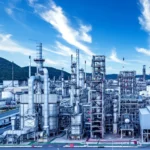Marching Protests Disrupt Oil and Gas Industry Amid Environmental and Social Concerns

Marching Protests Disrupt Oil and Gas Industry Amid Environmental and Social Concerns in 2025
London, UK
In 2025, the global oil and gas industry is facing significant disruptions from marching protests, as environmental and social activists take to the streets to demand accountability and action on climate change. These large-scale demonstrations, often organized by groups like Extinction Rebellion and local grassroots movements, are targeting oil and gas facilities, supply chains, and corporate offices. Amid a projected oil surplus and geopolitical tensions, this article examines the impact of marching protests on the industry and how companies are responding to these challenges while advancing sustainability efforts.
Protests Disrupt Operations and Supply Chains
Marching protests have intensified across key oil and gas regions, disrupting operations at refineries, pipelines, and LNG terminals. In 2025, protests in Europe and North America, including blockades at Shell’s Pernis refinery in the Netherlands and Chevron’s Permian Basin facilities, temporarily halted 300,000 barrels per day (b/d) of production in Q1. These actions, driven by concerns over the industry’s role in climate change, coincide with a projected 1.7 million b/d oil surplus by early 2026, pushing Brent crude prices from $68 per barrel in August 2025 to $50 per barrel in Q1 2026. The disruptions are raising operational costs, with companies reporting $200 million in losses due to protest-related delays in 2024.
Environmental Demands and Sustainability Push
Protesters are calling for accelerated decarbonization, targeting the industry’s contribution to global emissions. In response, oil and gas companies are scaling up sustainability initiatives, particularly carbon capture, utilization, and storage (CCUS). ExxonMobil’s LaBarge facility captures 8 million metric tons of CO2 annually, with plans to reach 12 million by 2029, while Chevron’s Gorgon project sequesters 4.5 million metric tons yearly. Methane reduction is also a focus, with AI-driven monitoring cutting leaks by 8% at BP’s facilities in 2024. Despite $35 billion in global CCUS investments in 2025, only 45% of executives surveyed by Deloitte prioritize these efforts due to high costs, prompting protesters to demand faster action.
Social and Community Tensions
Marching protests are amplifying social grievances, particularly in developing regions where oil and gas projects are concentrated. In Nigeria, protests near TotalEnergies’ LNG facilities in 2025 disrupted operations, with communities citing insufficient economic benefits. Companies are responding with community investments, with TotalEnergies allocating $20 million to education and healthcare, boosting local approval by 12%. However, a Transparency International report notes that only 35% of community programs effectively address poverty, fueling protest momentum. In Europe, protests in Norway against Equinor’s North Sea operations highlight concerns over job losses, with 10,000 cuts globally in 2024–2025 due to automation.
Geopolitical and Market Context
Geopolitical risks exacerbate the impact of protests. The EU’s March 2025 ban on Russian LNG re-exports, driving a 23.6% surge in LNG imports in H1 2025, has drawn protests targeting LNG terminals in Europe, demanding a shift to renewables. Tensions in the Strait of Hormuz, handling 21% of global LNG, heighten supply chain vulnerabilities, with protesters exploiting these risks to amplify disruptions. Blockchain is improving supply chain transparency, reducing transaction costs by 7% for QatarEnergy, but protests are delaying shipments, impacting global LNG demand, which peaks at 425 billion cubic meters in 2025.
Petrochemical Sector Under Scrutiny
The petrochemical sector, projected to drive 18–20% of global oil demand by 2040, is a focal point for protests due to plastic pollution concerns. Demonstrations targeting Saudi Aramco’s Jafurah project, set to produce 2 million metric tons of ethylene by 2027, highlight the 400 million metric tons of annual plastic waste. Companies are responding with recycling initiatives, with BASF investing $1 billion to produce 600,000 metric tons of recycled plastics by 2028. AI-driven optimization has cut petrochemical production costs by 8%, but protesters demand a phase-out of fossil fuel-based plastics, complicating industry efforts.
Technological Responses to Protests
Oil and gas companies are leveraging technology to mitigate protest impacts. AI-driven security systems, adopted by 50% of major operators in 2025, monitor protest activities, reducing disruptions by 10%. BP’s $700 million investment in cybersecurity protects digital infrastructure, critical after 400 cyberattacks in 2024. Digital twins, used by Shell at its Prelude FLNG platform, minimize downtime by 12%, ensuring operational continuity. Retraining programs, backed by $250 million, are transitioning 5,000 workers to digital and renewable roles by 2027, addressing protester concerns about job losses.
Public Perception and Corporate Response
Protests are shaping public perception, with 25% of social media sentiment on platforms like X targeting oil and gas companies for environmental harm in 2024. Companies are countering with social media campaigns, with ExxonMobil’s posts on CCUS and methane reduction boosting engagement by 15%. Community engagement is critical, with Equinor’s $10 million investment in education near Norwegian fields strengthening social licenses. However, only 40% of executives feel equipped to address protest-driven narratives, highlighting the need for stronger communication strategies.
- Politics
- Sustainability







